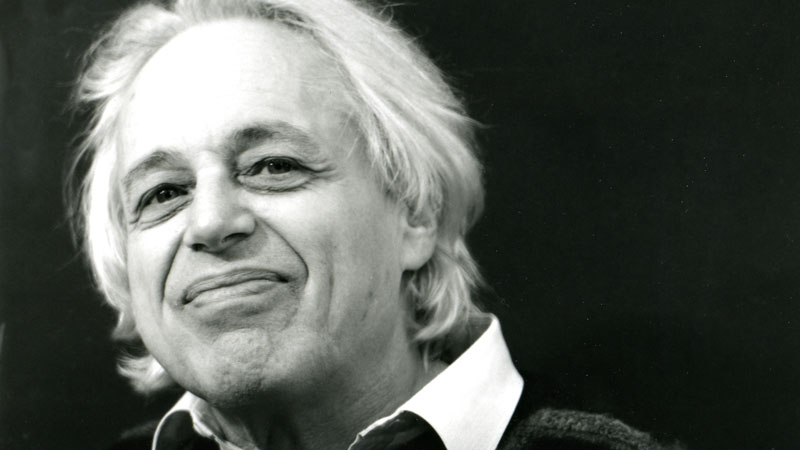Léonie Sonning Prize 2001
The German violinist Anne-Sophie Mutter received the Léonie Sonning Music Prize of 400,000 Danish kroner at a concert on 22 February 2001 at the Tivoli Concert Hall. In connection with the prize, the Danish Broadcasting Corporation made a television portrait of Mutter, including interviews and excerpts from the prize concert, which was broadcast on 24 February 2001.
The music prize was presented by the editor Steen Frederiksen, chair of the Léonie Sonning Music Foundation’s board. His speech at the prize concert included the following comments:
‘An atmosphere of radiance and elegance surrounds you. “Classical music’s one true superstar”, some say – a counterpart to pop music’s own stars. But the moment you play, the comparison fades and the atmosphere transforms into one of deep fervour. Because the experience you deliver is always special, and the music does exactly as you described when, in Copenhagen last year, you discussed its communicative power: “music reaches us, touches us, gives us something to remember and enriches us.” Historically, you have played a major role in Europe’s relationship with the violin. The continent had been dominated by the style of the great American virtuosos and the European tradition of beauty and depth was in danger of being lost. And then you came on the scene, reinventing and renewing the very best of the European violin tradition.’
citation
The Léonie Sonning Music Prize 2001, of 400,000 Danish kroner, is awarded to Anne-Sophie Mutter, one of the greatest violinists of our time. Mutter has rejuvenated the European violin tradition and consistently given us musical experiences at the highest level, whether playing chamber music or solo concertos. She has taken this spirit to new music while also giving old music new clothes, always with a personal interpretation. Mutter constantly challenges herself and her audience.’
The programme
Mozart Violin Sonata in G major K301
Schubert Violin Sonata in A major D574
Fauré Violin Sonata No 1 Op 13
Mozart Violin Sonata in B flat K?
Kreisler Liebesleid and Schön Rosmarin from 3 Old Viennese Dances (encore)
Participants:
Anne-Sophie Mutter, violin
Lambert Orkis, piano
Anne-Sophie Mutter and Denmark
Since the beginning of her career in the 1980s, Anne-Sophie Mutter has given a number of concerts in Denmark, at the Tivoli Concert Hall, with the Danish National Symphony Orchestra, with the Royal Danish Orchestra, with the Odense Symphony Orchestra, with the Aarhus Symphony Orchestra and in more recent years with her own chamber orchestra, Mutter’s Virtuosi. In 1996, when Copenhagen was European Capital of Culture, she was the soloist in Brahms’s Violin Concerto at the Tivoli Concert Hall with the New York Philharmonic, conducted by Kurt Masur. In 1998 she played Beethoven’s sonatas at Tivoli with her regular pianist, Lambert Orkis. During a press conference at the Hotel d’Angleterre before the prize concert, Mutter commented: ‘It is always something special for me to come back to Copenhagen. I must say that it is rare to experience such a faithful and hard-listening audience. For me, this is symbolic of the relations between the Danish music audience and German musicians.’
The daily press wrote, among other things:
It is banal to say that Mutter is a perfectionist. Any musician on her level is. Better to say that she cares for the sound of every note, with a will to either do something with it or leave it alone. That is unique. In leaving notes alone, letting them stand completely naked without vibrato, she invested Fauré’s Sonata for Violin and Piano Op 13 with an almost pedagogical clarity. There were entire phrases without vibrato, entirely quiet and gentle; then the subsequent, consequential phrase resounded with a full-blooded, vibrating tone, saturated with warmth and bass, the phrasing stretched to the extreme, the music quivering. It was heartbreaking without being cloying. Mutter’s control and overview could lead her to play safe. So it’s strange that for all her control, expression seeps out from between the cracks in the musical edifice. Expression that seems so much more violent because it surprises or startles in the middle of a musical phrase. Her three encores by Kreisler thus became not bloated salon pieces but an expressions of a delightful decadence, balanced between expression and construction.
(Anders Beyer, Information, 24 February 2001)
There was extreme attention. Coughs stayed in the mouth. Because Anne-Sophie Mutter demands perfection of her audience as well as of herself. So, between the second and third movement of Faure’s first violin sonata we were reprimanded. Subsequently, in her speech of thanks, she softened up by wishing us better health and promising another Kreisler encore next time she visits.
(Knud Ketting, Jyllands-Posten, 24 February 2001)





